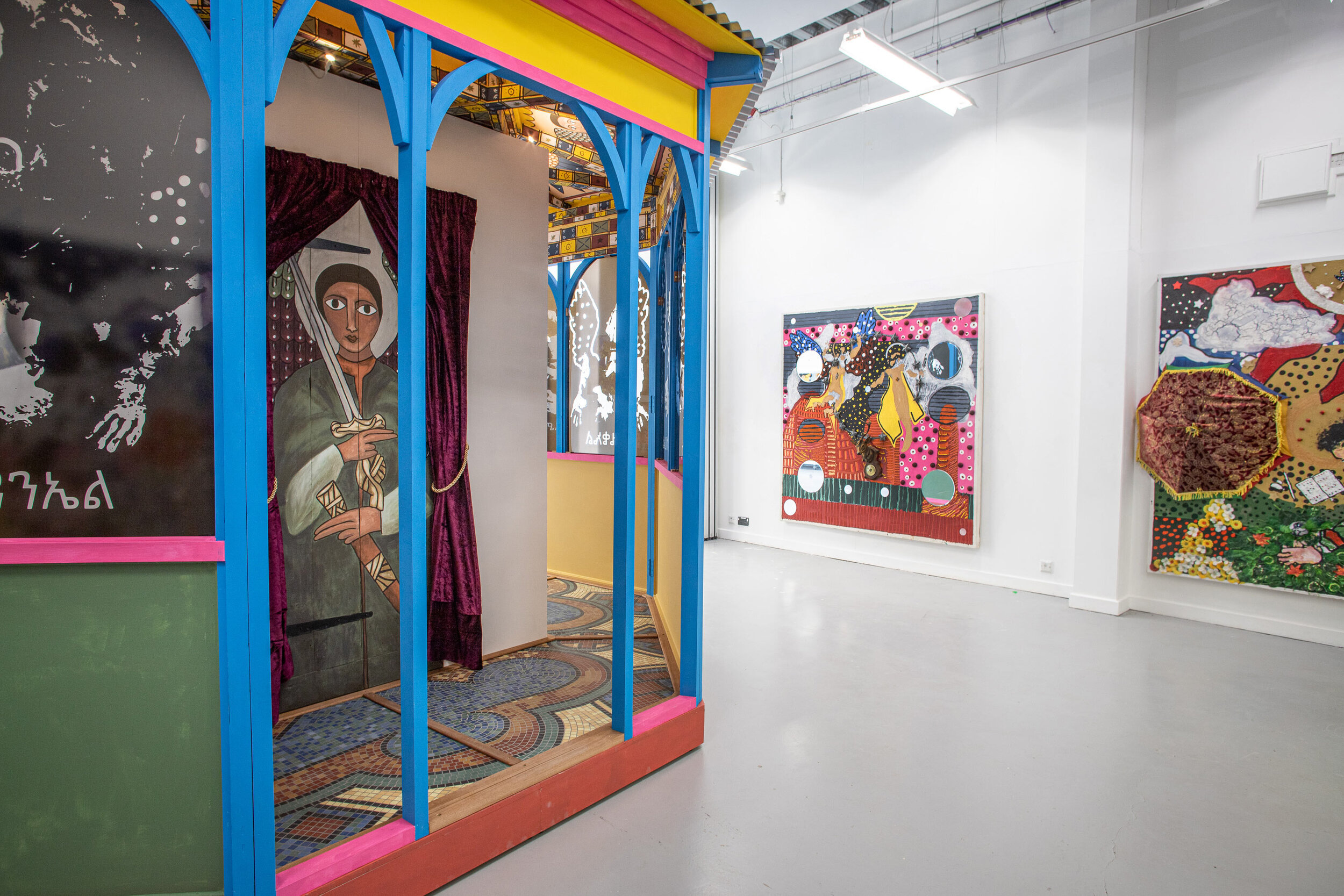
Take the tour
Explore the Book of Enoch through this amazing virtual walkthrough below
“The entire church and the series of 12 paintings are a tribute to the book of Enoch and celebrate its status as Old Testament scripture in Ethiopian Orthodoxy.”
The Model
In his travels in Ethiopia with Philip Esler researching for his series of paintings on the text of 1 Enoch, Angus Pryor quickly came to realise that paintings in the Western tradition made little sense within the Ethiopian tradition. By visiting and seeing many inspirational paintings in context, he began to understand how paintings were displayed in Ethiopia. Churches were almost all open to entry and the paintings were displayed very democratically. There seemed to be no hierarchy and the paintings had no descriptors. They hung simply as part of the whole narrative, not only in relation to the lineage of the paintings but also in relation to the church itself. The churches themselves also seemed to have no hierarchy, so that a tin-roofed or a thatched roof building could hold some of the world’s great treasures. His two biggest inspirations were a church in a monastery on the shores of Lake Tana and another in Aksum. Here he learned that although Ethiopia has masterpieces that compare and relate to the Western tradition, they have never been examined or celebrated in the way that European art is celebrated and examined by art historians who survey Western art in monographs and on television.
He created the model for the church as a homage to Ethiopian ecclesial architecture and paintings and to give his own Ethiopian-inspired paintings a context in which they could be hung in the West. He wanted to create a complete narrative of the book of Enoch much as his paintings have done. The design of the floor was something that Pryor and Esler discussed before deciding on an image from an Ethiopian prayer scroll. This symbolises Earth, in the sign of a cross with corner stones recreated in mosaic using muted understated earth colours. He aimed for the audience to be able to stand on this beautiful symbol of the earth in order to feel grounded.
In the centre we see the Holy of Holies holding the sacred Ark; only the Abba (priest) can enter here. The door is guarded by St Raphael in an aggressive manner as a warning that none but the pure can pass. Curtains hang so that at each day’s they can be drawn to seal the entrance. On one of the walls is a painting of Enoch (this is an Enoch church) showing the scribe in contemplation by the waters of Dan with his notebook and pen. On another side wall, copies of Pryor’s series of 12 paintings hang in sequence, simulating the full size (2 square metres) series that might hang in a full-size church. As we look up we can see the guardian angels who stand at the gates Heaven and are thus able to engage with the celestial universe.
The bright exterior celebrates the Ethiopian tradition of very colourful churches and contrasts sharply with our own culture of sombre stone churches. The pearl on top symbolises the sacred virgin,24 and, although sitting on an ordinary tin roof to emphasise her humility, points us towards heaven. The monochrome stained-glass windows depict 10 named Watchers in human form, descending to earth to suffer the consequences of their sins against God. They are Samyazah, Araki, Ramel, Kokabiel, Tamiel, Ramiel, Danel, Ezeqel, Baraqel and Asael. (In one of the paintings Asael is bound and blindfolded and encapsulated in the mountains of Doudael.) The fact that there is no colour in these windows symbolises that their status and place in heaven has been withdrawn and they must await their punishment at the End-Time.
The entire church and the series of 12 paintings are a tribute to the book of Enoch and celebrate its status as Old Testament scripture in Ethiopian Orthodoxy.
__
24 For the connection between the pearl and the Virgin Mary in Ethiopian tradition, see Philip F. Esler, Ethiopian Christianity: History, Theology, Practice (Waco, TX: Baylor University Press, 2019), 113-114.
View the collection of Pryor’s Book of Enoch work
Create a response to the project







